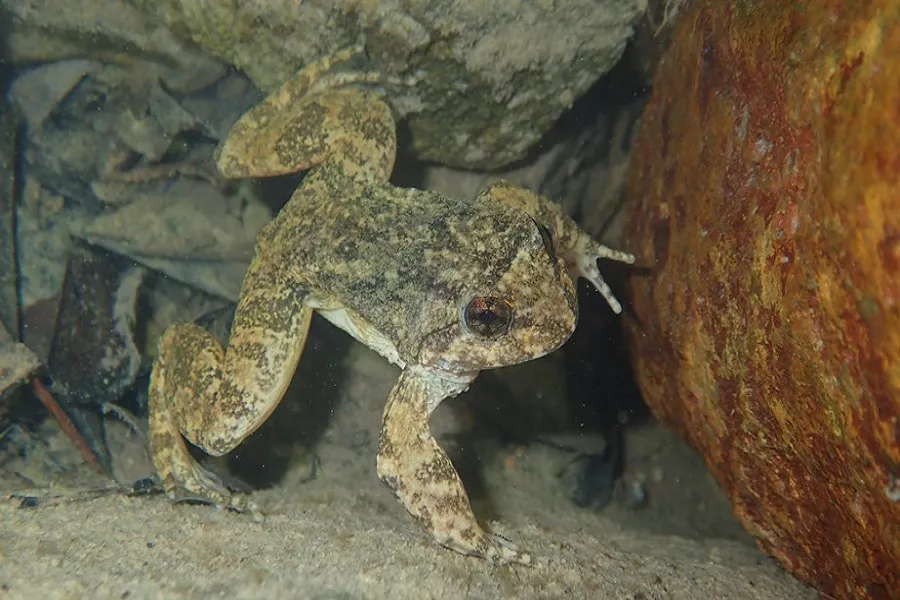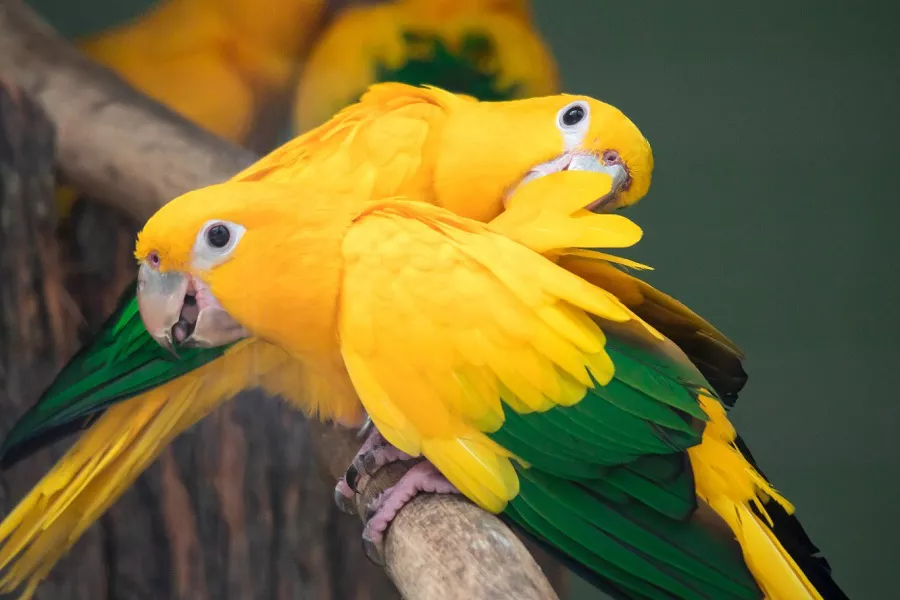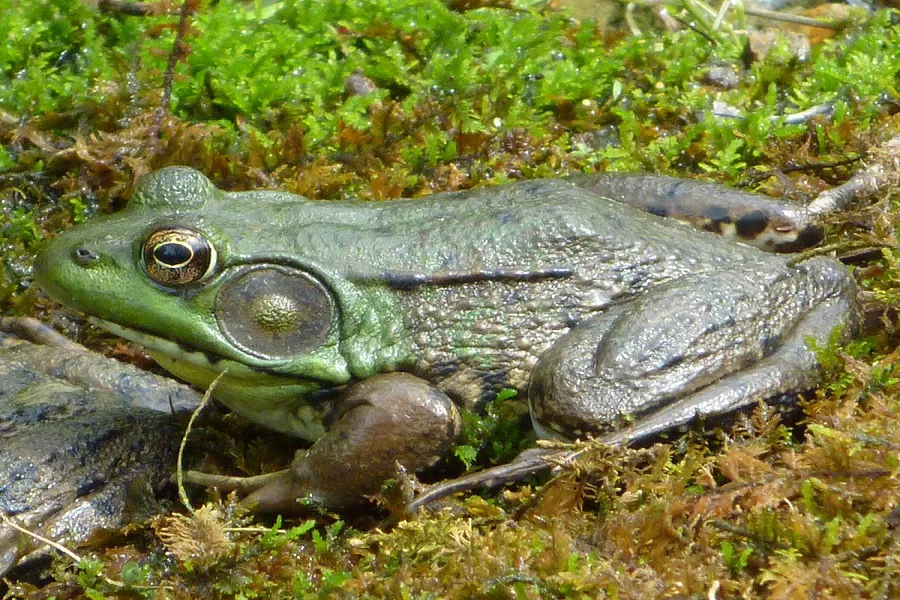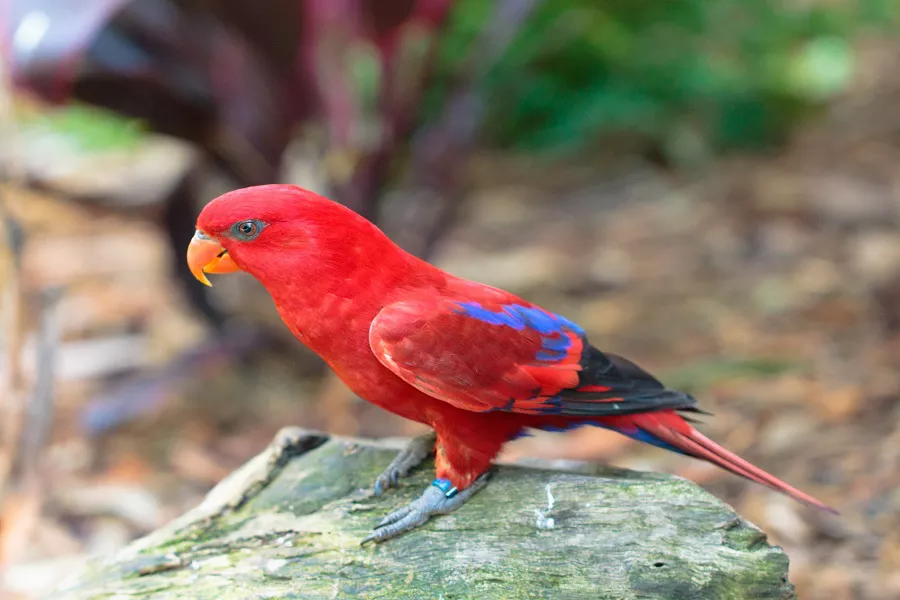What is quasipaa spinosa?
Spinosaurus (scientific name: Quasipaa spinosa) is an amphibian of the family Fork-tongued frog. Head wider than head length; muzzle rounded; snout edges inconspicuous; cheeks slightly inclined outward; nostrils between snout eyes; tympanic membrane vaguely visible; vomer teeth strong; tongue oval, deeply notched at rear. The forelimbs are sturdy, and the forearm and hand are nearly half the length of the body; the male frog’s forearm is particularly sturdy; the fingers are slightly flat and the ends of the fingers are rounded; the original thumb is well developed, with obvious sub-joint tumors at the base of the fingers, nearly spherical; 3 palmar processes, inner palmar process Large, oval. The hind limbs are sturdy, and the tibiotarsal joint reaches the eye when the body is stretched forward; the toes are spherical; the toes are fully webbed or nearly fully webbed; the inner metatarsal process is narrow and long, and there is no outer metatarsal process. The male frogs have long and short warts on the back, which are arranged in intermittent rows; the female frogs have sparse small round thorn warts on the back; there are transverse skin ridges between the eyes and obvious temporal folds; the male frogs have large and small fleshy warts on the chest. When living, the back is black-brown or brownish-yellow, with dark brown horizontal stripes between the eyes.
What does quasipaa spinosa look like?
The male frog is 123 mm long and the female frog is about 131 mm long. Head wider than head length; snout rounded, protruding lower lip; snout edges inconspicuous; cheeks slightly inclined outwards; nostrils between snout and eyes, slightly close to eyes; tympanic membrane faintly visible; vomer teeth strong, from the inner nostrils The medial side is inclined to the midline, and the posterior end of the dentition is narrowly spaced; the tongue is oval, and the posterior end is deeply notched.
The forelimbs are sturdy, and the length of the forearm and hand is nearly half the length of the body; the forearm of the male frog is particularly sturdy, the widest is 24.0 mm, which is about 16.2% of the body length; the fingers are slightly flat and the ends of the fingers are rounded; the first finger is longer than the second finger , the first and third fingers are almost equal in length; the medial margins of the second and third fingers are clearly webbed; the original thumb is well developed, with obvious subarticular tumor at the base of the fingers, nearly spherical; 3 palmar processes, the inner palmar processes are large, oval, The two lateral palmar processes are narrow and long and close to each other, not very obvious. The hind limbs are fat, the tibiotarsal joint reaches the eye when the body is extended forward, and the left and right heels only meet or overlap slightly; the length of the tibia is about half the length of the body; , reaching the base of the plantar; the toes are fully webbed or nearly fully webbed; the lateral intermetatarsal web reaches half the length of the footstep; the subarticular tumor is obviously nearly round; the inner metatarsal process is narrow and long, without the outer metatarsal process; half.
quasipaa spinosa living habits
Quasipaa spinosa lives in luxuriant mountains and streams at an altitude of 600-1500 meters, especially in the mountains, streams, ditches and pools in the deep mountains and old forests. Likes to live in groups and forage at night, and is photophobic and afraid of being disturbed. The jumping ability is very strong, and the jump height can reach 1 meter. During the day, they mostly hide in stone caves or soil caves, and climb out of the caves in the evening to forage in the rocks on both sides of the mountain stream or in the bushes and grasses on the hillsides. will kill each other. The activity range is not large, mostly 20-30 meters around the cave, and when it is late at night, return to the cave. Thoracic frogs are very sensitive to changes in air and water temperature. On hot, dry, low-pressure nights, or just before a storm, they burrow out to jump to higher rocks or hillsides with a low, majestic chirping. When the water temperature exceeds 30 ℃, the frog will go into aestivation. After the frost in the late autumn, the water temperature is lower than 15 ℃, and it begins to hibernate. Before and after the sting, the water temperature rises above 15 ℃ successively.
quasipaa spinosa rearing
The gestational amount of the spiny frog is 300-2800; the breeding season is May-September. Spiny frogs mate before spawning; usually at night, with cuddly pairing habits, in vitro fertilization. Eggs are laid in batches, 122-350 eggs are laid each time, and 1000-1500 eggs can be laid in one breeding season; the eggs take 20 days to hatch in the water temperature of 16-18°C, and about 7 days in the water of 26-28°C The tadpoles hatched early can complete the metamorphosis in the same year after 4-5 months of growth; the tadpoles hatched in the middle and late stages need to overwinter and complete the metamorphosis in May-June of the following year; It takes about 2 years to reach sexual maturity.

















